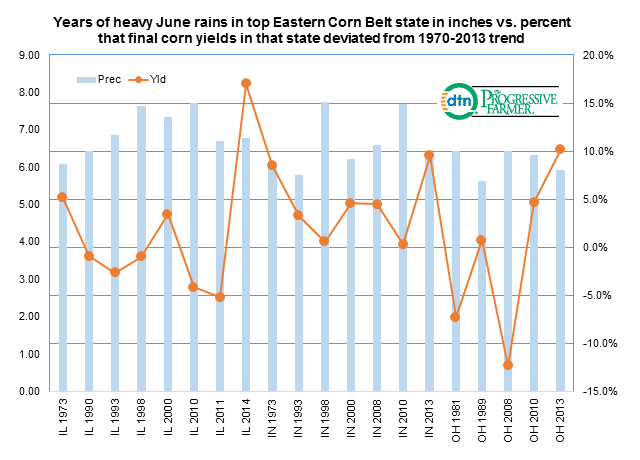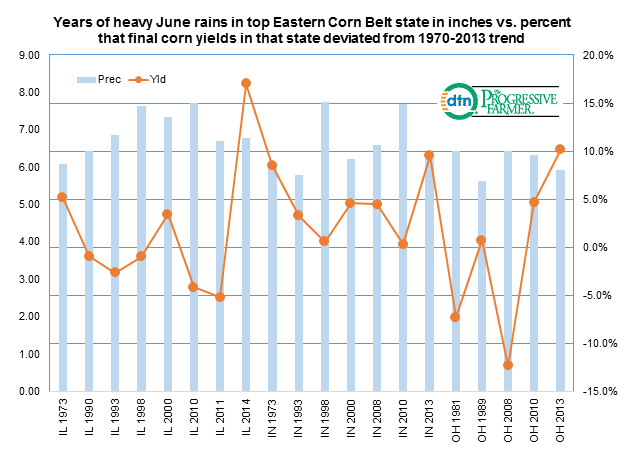Fundamentally Speaking
Corn Yields Can Hold Despite Heavy Rains
The grain markets spiked sharply higher this week as funds feverishly cover short positions and perhaps are getting long as December corn now along with November soybeans have convincingly pierced longstanding downtrend lines adding to an increasingly bullish technical picture.
The fundamental catalyst for this rally remains very heavy rains in many areas of the Midwest concentrated mostly in Delta and Eastern Corn Belt. Traders are unsure how to react to the unusual situation of "too much rain".
Nonetheless concerns center on areas of intended corn and even larger parcels of soybeans left to be planted, the impact of standing water on young plants and saturated soil conditions resulting in leaching of nutrients and inability to side dress.
P[L1] D[0x0] M[300x250] OOP[F] ADUNIT[] T[]
The biggest factor as far as we are concerned is now row crops needing constant water all growing season as the establishment of an extensive root system has been compromised as a sudden stoppage in moisture ala 1974 or 1995 could prove devastating.
As we learned in 2012, a dry June can be devastating to the crops but the experience with a wet June is different. Many are recalling 1993 but rains and floods that year so far were far more extreme.
Work we have done suggests that a wet June in of itself does not necessary translate into below trend final corn yields.
This graphic shows the years of "heavy" June rainfall in the key Eastern Corn Belt states of IL, IN and OH since 1970 and the percent in each of those years that states final corn deviated from the 1970-2014 trend.
We defined heavy rain as the 1970-2014 average plus one standard deviation, a level that is exceeded 16% of the time or less.
In Illinois that was 5.95 inches of which there were eight occurrences, seven times in Indiana that June rainfall was 5.77 inches or higher and 5.48 inches or more in Ohio which occurred five times.
Of these 20 occurrences, only seven times were final corn yields below trend the most being Ohio's 2008 yield 12.3% below trend.
Even the rainiest Junes where average precipitation was 7.62 inches yields were right at trend.
(KA)






Comments
To comment, please Log In or Join our Community .